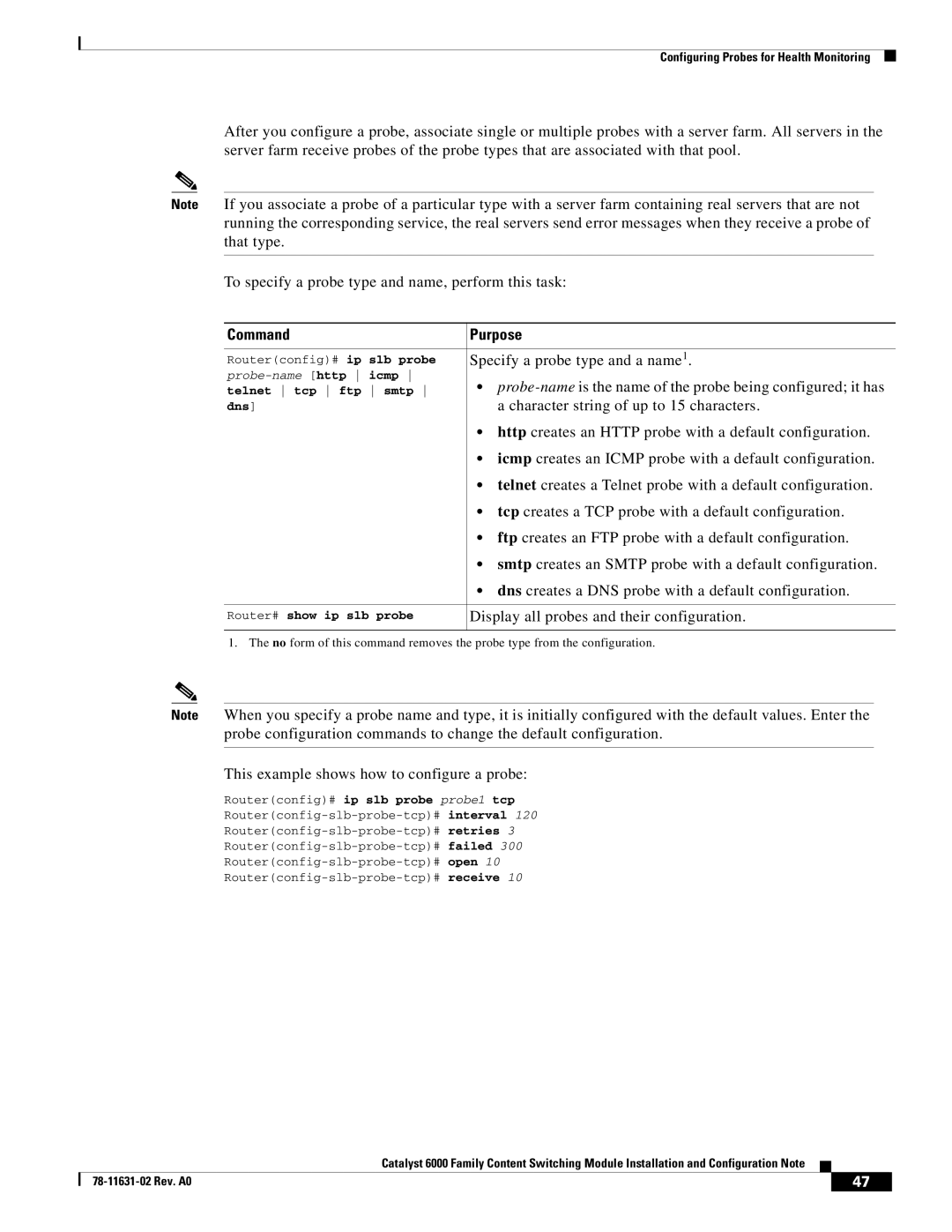
Configuring Probes for Health Monitoring
After you configure a probe, associate single or multiple probes with a server farm. All servers in the server farm receive probes of the probe types that are associated with that pool.
Note If you associate a probe of a particular type with a server farm containing real servers that are not running the corresponding service, the real servers send error messages when they receive a probe of that type.
To specify a probe type and name, perform this task:
Command | Purpose |
|
|
Router(config)# ip slb probe | Specify a probe type and a name1. |
• | |
telnet tcp ftp smtp | |
dns] | a character string of up to 15 characters. |
| • http creates an HTTP probe with a default configuration. |
| • icmp creates an ICMP probe with a default configuration. |
| • telnet creates a Telnet probe with a default configuration. |
| • tcp creates a TCP probe with a default configuration. |
| • ftp creates an FTP probe with a default configuration. |
| • smtp creates an SMTP probe with a default configuration. |
| • dns creates a DNS probe with a default configuration. |
|
|
Router# show ip slb probe | Display all probes and their configuration. |
|
|
1. The no form of this command removes the probe type from the configuration.
Note When you specify a probe name and type, it is initially configured with the default values. Enter the probe configuration commands to change the default configuration.
This example shows how to configure a probe:
Router(config)# ip slb probe probe1 tcp
|
| Catalyst 6000 Family Content Switching Module Installation and Configuration Note |
|
|
|
|
|
| |||
|
|
| 47 |
| |
|
|
|
|
